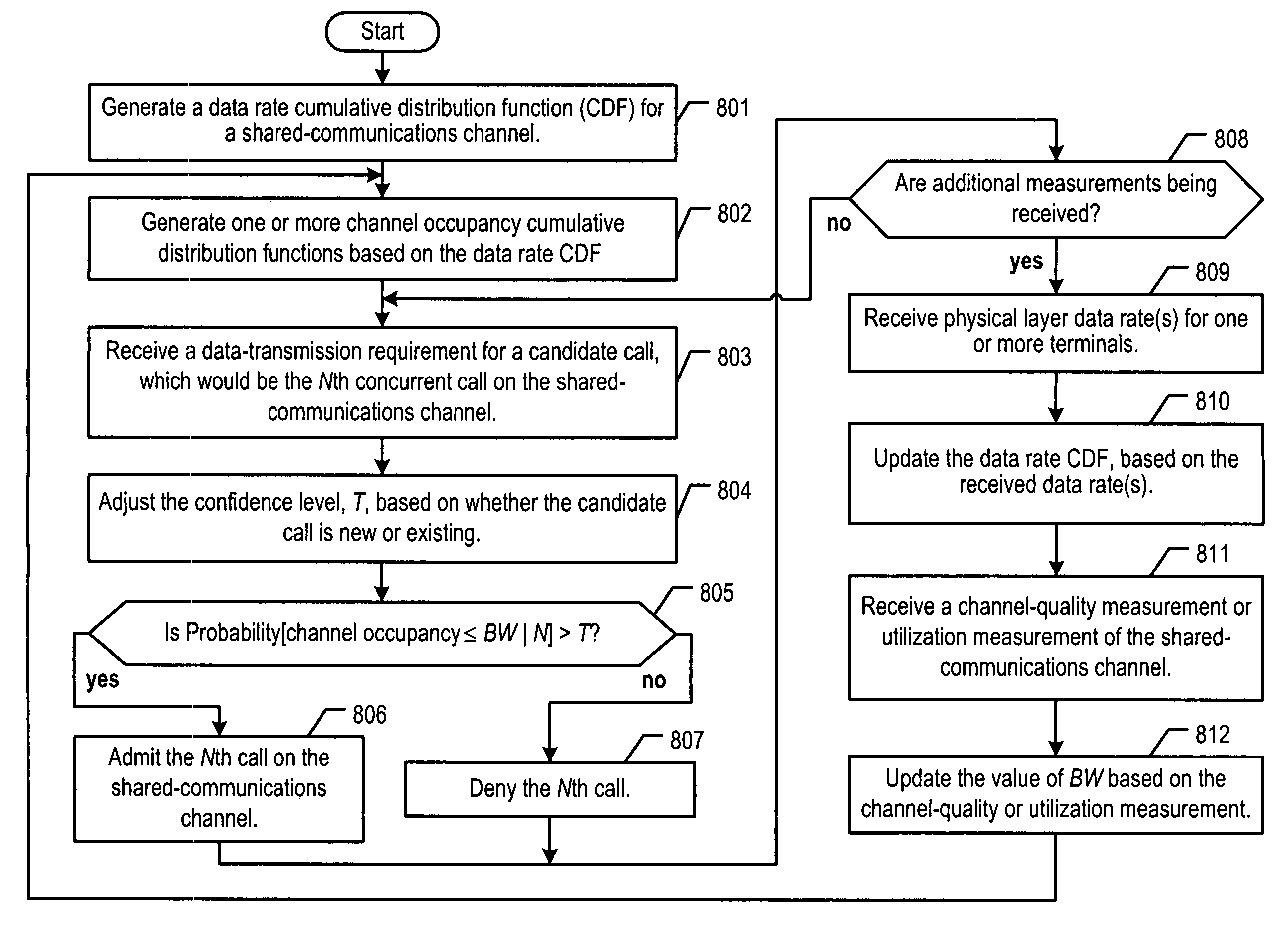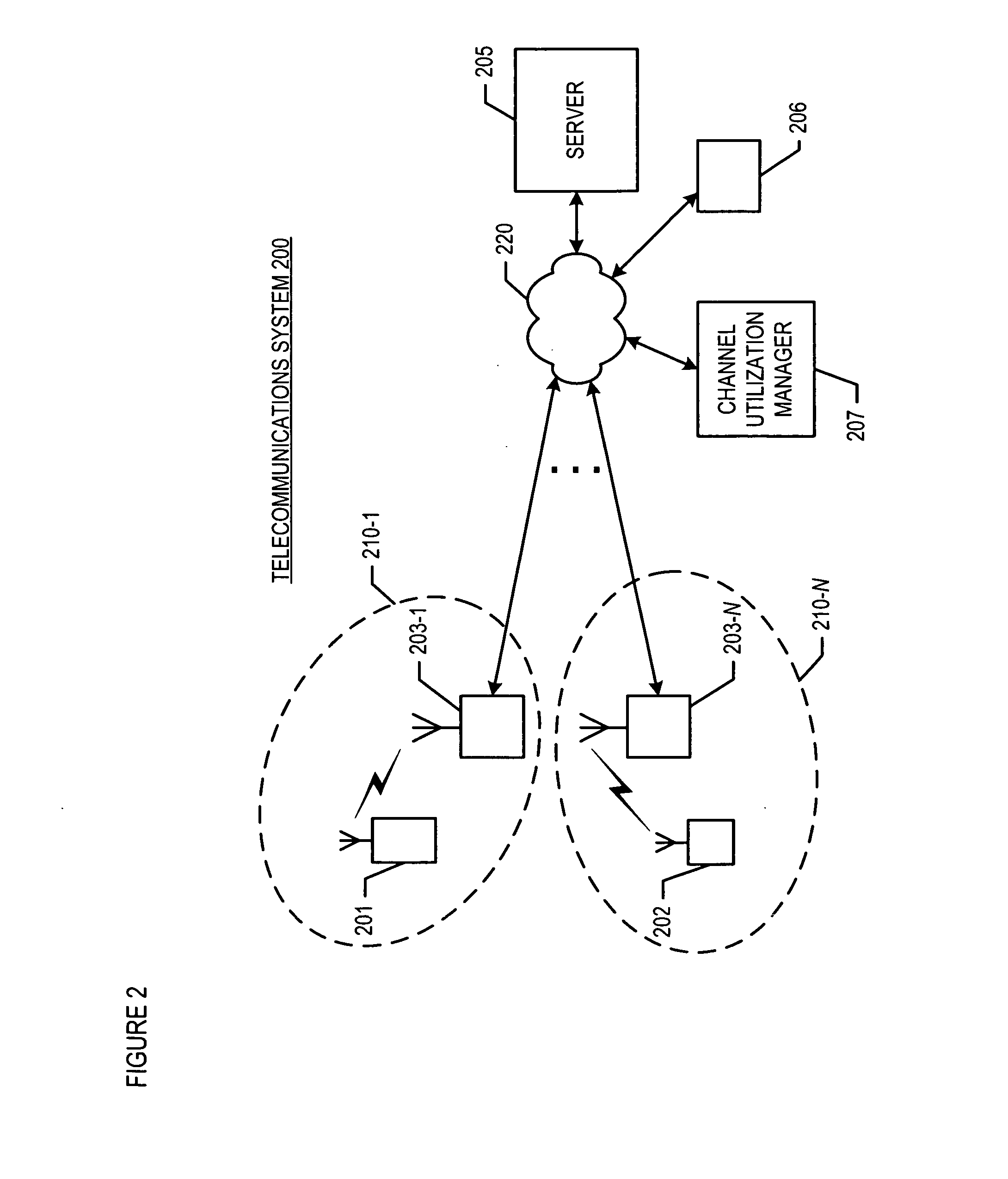Call admission control for mobility-capable telecommunications terminals
a technology of mobility-capable telecommunications terminals and call admission control, which is applied in the field of telecoms, can solve the problems of not being able to predict the actual variation of the terminal's movement during a call as a function of time, and the difficulty of considering the variation in channel occupancy
- Summary
- Abstract
- Description
- Claims
- Application Information
AI Technical Summary
Benefits of technology
Problems solved by technology
Method used
Image
Examples
Embodiment Construction
[0034] The following terms are defined for use in this Specification, including the appended claims: [0035] The term “data-transmission requirement,” and its inflected forms, is defined as a requirement for the proper transmission of data, wherein the data transmission occurs via a communications resource, such as a wireless shared-communications channel. Examples of data-transmission requirements include the data periodicity to be maintained, quality-of-service requirements (i.e., related to bandwidth required, maximum error rate, and maximum latency), and so forth. The required bandwidth refers to the data rate, or the channel time, that is required for the traffic stream of data to be transmitted. [0036] The term “traffic stream description,” and its inflected forms, is defined as the information that specifies the data-transmission requirements, either explicitly or implicitly. For example, instead of explicitly stating a requirement (e.g., data rate of 1 Mbps, etc.), the traffi...
PUM
 Login to View More
Login to View More Abstract
Description
Claims
Application Information
 Login to View More
Login to View More - R&D
- Intellectual Property
- Life Sciences
- Materials
- Tech Scout
- Unparalleled Data Quality
- Higher Quality Content
- 60% Fewer Hallucinations
Browse by: Latest US Patents, China's latest patents, Technical Efficacy Thesaurus, Application Domain, Technology Topic, Popular Technical Reports.
© 2025 PatSnap. All rights reserved.Legal|Privacy policy|Modern Slavery Act Transparency Statement|Sitemap|About US| Contact US: help@patsnap.com



